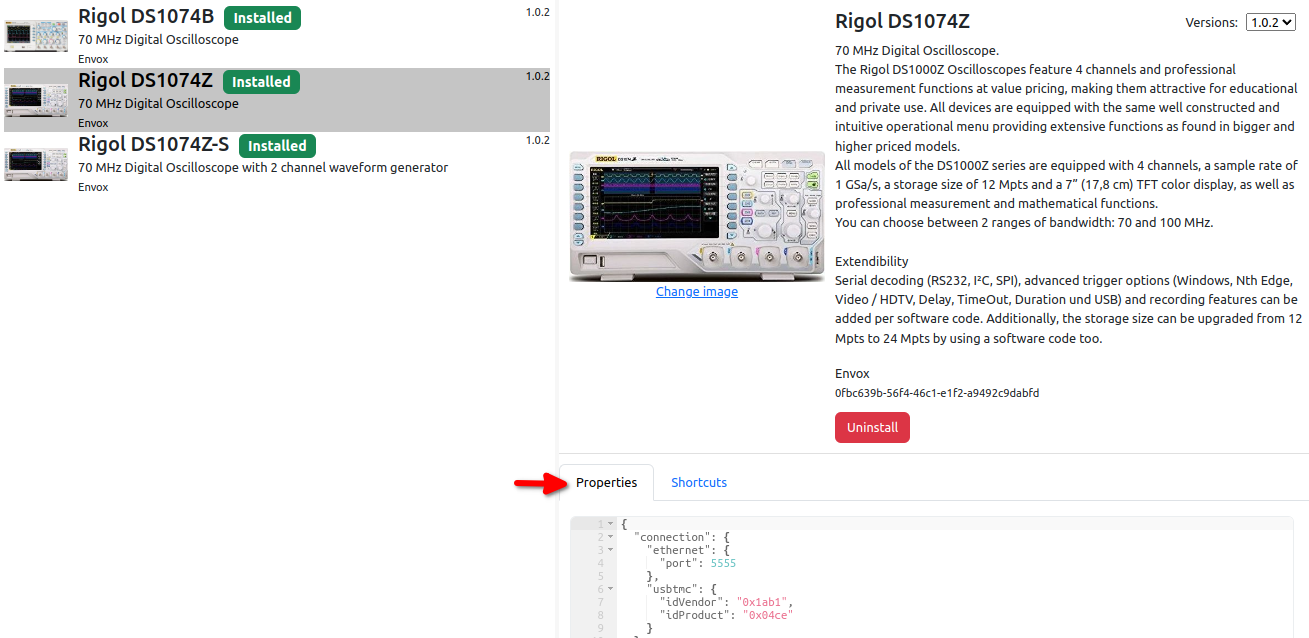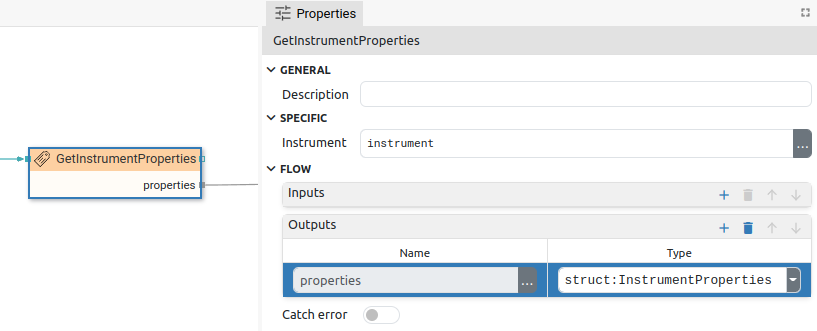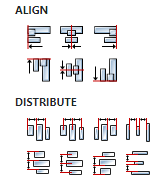GetInstrumentProperties
Description
Using this Action, we can retrieve the instrument properties that are defined within the IEXT instrument extension.
For example, in the Rigol Waveform Data example, we want to retrieve how many channels the instrument has and what color is used for each channel. First, we can look at all the properties of the Rigol DS1000Z instrument:

Now it is necessary to define the Flow variable type in which we want to store the properties we are interested in. In this case, we define the type struct:InstrumentProperties defined as follows:

The InstrumentProperties structure has one member called channels, which is of type array:InstrumentPropertiesChannel, and which is defined as follows:

And now using this Action in one step we can retrieve information about all channels:

After we have retrieved the properties, we can find out the number of channels with Array.length(properties.channels), and the color, for example, of the 1st channel with: properties.channels[0].color.
Properties
Specific
-
Instrument
EXPRESSION (object:Instrument)
-
The instrument whose properties will be retrieved.
General
-
Description
String
-
This is the description of the Action component. Description is displayed below the component in the Project editor/viewer. In the main toolbar, it is possible to hide or display descriptions of all components with one click.
Flow
-
Inputs
Array
-
Additional component inputs that the user can add as desired in order to use them to receive additional data needed when evaluating expressions in properties. Each input is given a name and type. Name is used when referencing an input within an expression. A type is used to project Check to check whether a data line that transmits data of that type is connected to the input or not.
-
Outputs
Array
-
Additional component outputs that the user can add to send data through. Each output is assigned a name and type. An example of using this output is e.g. in the Loop component, where we can put the output name for the
Variableproperty instead of e.g. variable name. In that case, the Loop component will not change the content of the variable in each step, but will send the current value through that output. -
Catch error
Boolean
-
If this checkbox is enabled then an
@Erroroutput will be added to the component and if an error occurs in this component during the execution of the Flow, the Flow will continue through that output. The data that will be passed through that output is the textual description of the error.
Position and size
-
Align and distribute
Any
-
Alignment icons and component distribution. Alignment icons appear when two or more components are selected, and distribution icons appear when three or more components are selected.

Inputs
-
seqin
SEQ | MANDATORY
-
A standard sequence input.
Outputs
-
seqout
SEQ | OPTIONAL
-
A standard sequence output.
-
properties
DATA(any) | MANDATORY
-
Retrieved properties are sent to this output.
Examples
- Rigol Waveform Data
